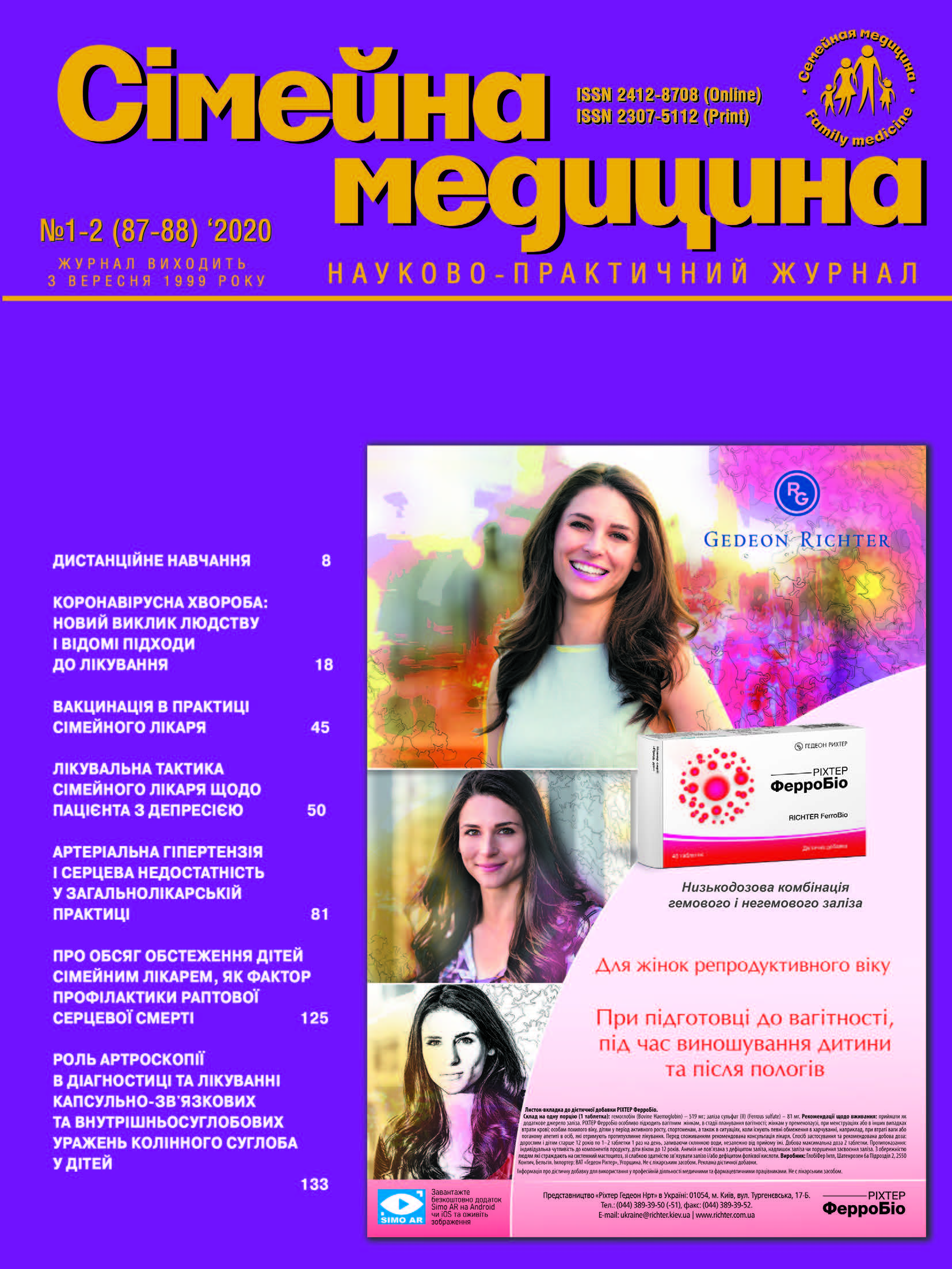Хірургічне лікування хронічного тонзиліту
##plugins.themes.bootstrap3.article.main##
Анотація
Використання діатермії або кобляції як для розсічення тканин, так і для гемостазу знижують первинну кровотечу, але підвищують ризик вторинної кровотечі порівняно з традиційною тонзилектомією.
Мета дослідження: підвищення ефективності хірургічного лікування дітей з хронічним тонзилітом.
Матеріали та методи. Під спостереженням у клініці перебувало 75 дітей з хронічним тонзилітом у віці від 6 до 17 років. В основну групу було включено 52 дитини, у группу порівняння – 23. Під час тонзилектомії в основній групі використовували біполярні інструменти та режим роботи генератора високочастотного струму «зварювання ручне» («перекриття») з частотою струму 66 кГц або 440 кГц.
Результати. Під час тонзилектомії з використанням високочастотного струму інтраопераційна крововтрата становила 6,0±0,440 мл, а під час тонзилектомії за традиційною методикою інтраопераційну крововтрату фіксували на рівні 32,48±1,781 мл (р˂0,001), тобто крововтрата у разі використання високочастотного струму була меншою у 5,4 разу. Час проведення тонзилектомії скоротився у 2,1 разу. Прояви місцевої реакції тканин після тонзилектомії із застосуванням і без використання електротермоадгезії суттєво не відрізняються.
Заключення. Використання високочастотного біполярного зварювання біологічних тканин із застосуванням розроблених біполярних електроінструментів під час проведення тонзилектомії значно підвищує якість операцій, а саме – крововтрата під час тонзилектомії зменшується у 5,3 разу (p<0,001), тривалість хірургічного втручання скорочується у 2,1 разу, вторинна кровотеча у пацієнтів, у яких використовували запропоновану методику, відсутня. Прояви місцевої реакції тканин після тонзилектомії із застосуванням і без використання електротермоадгезії суттєво не відрізняються.##plugins.themes.bootstrap3.article.details##

Ця робота ліцензується відповідно до Creative Commons Attribution 4.0 International License.
Автори зберігають авторське право, а також надають журналу право першого опублікування оригінальних наукових статей на умовах ліцензії Creative Commons Attribution 4.0 International License, що дозволяє іншим розповсюджувати роботу з визнанням авторства твору та першої публікації в цьому журналі.
Посилання
Van Den Akker EH, Hoes AW, Burton MJ, Schilder AG. Large international differences in (adeno) tonsillectomy rates. Clin Otolaryngol Allied Sci. 2004 Apr;29(2):161–164.
Baugh RF, Archer SM, Mitchell RBet al. Clinical practice guideline: tonsillectomy in children. Otolaryngol Head Neck Surg 2011; 144:S1-30.
Royal College of Surgeons of England. National prospective tonsillectomy audit: final report of an audit carried out in England and Northern Ireland between July 2003 and September 2004. May 2005. http://www.entuk.org/members/audits/tonsil/ Tonsillectomy audit report pdf. Accessed February 3, 2010.
Mowatt G, Cook JA, Fraser C, et al. Systematic review of the safety of electrosurgery for tonsillectomy. Clin Otolaryngol. 2006;31:95-102.
Soöderman, Hessén A-C, Odhagen E et al. Post-tonsillectomy haemorrhage rates are related to technique for dissection and for haemostasis. An analysis of 15734 patients in the National Tonsil Surgery Register in Sweden. Clin. Otolaryngol. 2015, 40, 248–254.
Burton MJ, Doree C. Coblation versus other surgical techniques for tonsillectomy. Cochrane Database Syst Rev. 2007;(3): CD004619.
Neumann C, Street I, Lowe D, et al. Harmonic scalpel tonsillectomy: a systematic review of evidence for postoperative hemorrhage. Otolaryngol Head Neck Surg. 2007;137:378-384.
Sarny S, Ossimitz G, Habermann W, Stammberger H. «Die Österreichische Tonsillenstudie 2010» – Teil 1: Statistischer Überblick. Laryngo-rhino-otologie 2012; 91:16-21.
Per Attner, Claes Hemlin, Anne-Charlotte Hessen Söderman. Ligasure versus diathermy scissors tonsillectomy: A controlled randomized study // Acta Otolaryngologica, 2010; 130: 1180–1184
Косаковський АЛ, Косаківська ІА, Семенов РГ, Семенов ВР (2011). Патент України на винахід № 96640. МПК А61В17/02 (2006.01), А61В17/24 (2006.01), А61В17/3211 (2006.01), А61В18/12 (2006.01). Распатор Косаківської-Семенова. Заявлено 13.02.2010; Опубл. 25.11.2011 р. Бюл. № 22.
Косаковський АЛ, Семенов РГ, Косаківська ІА, Семенов ВР (2010). Патент України на винахід № 92559. МПК (2009) А61В17/00. Електроскальпель. Заявлено 01.07.2009. Опубл. 10.11.2010. Бюл. 21.





